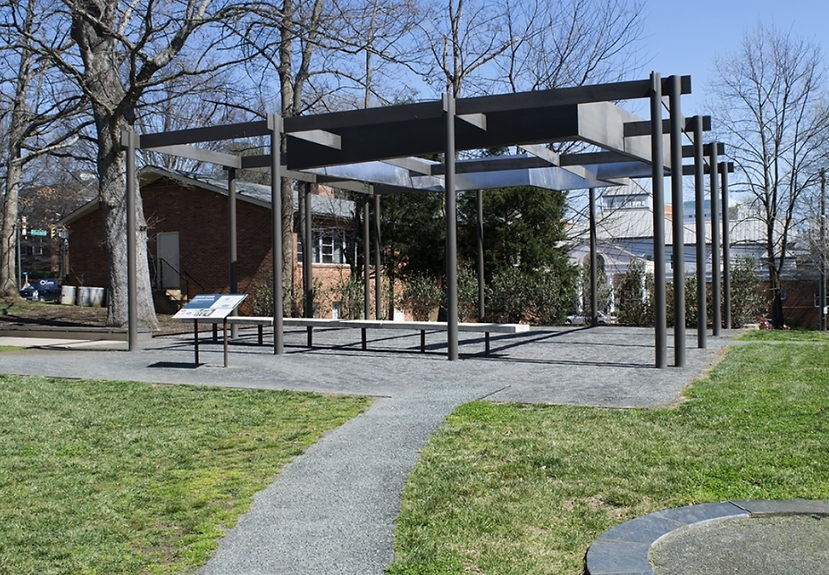Contested Spaces
Examining the Past, Present, and Forgotten at the University of Virginia

Effectiveness of Memorials on Grounds
Examining the Catherine Foster Memorial
Spaces that have been torn down often have the potential to be remembered through structures that intend to memorialize and spur remembrance. At the University of Virginia, there are a couple of prominent examples in which the University has attempted to memorialize or remember the contributions of enslaved laborers and prominent free African Americans in improvement of the school.
Featured on our panel was the Shadow Catcher on the South Lawn which intends to memorialize Catherine “Kitty” Foster and her impactful family. We decided to investigate the effectiveness of this memorial using a simple metric of remembrance. In a statistically accurate survey, we requested respondents indicate if they recognized the structure and explain what the structure represented. In terms of the Catherine Foster Memorial, 58% of respondents noted that they had seen the structure before, but a shocking 15% were able to accurately state the purpose of this structure.
In the same survey, we used the unchanged metric on the Unmarked Slaves’ Graves adjacent to the McCormick Road Cemetery. In this case, only 30% recognized the area and 19% identified the purpose of the space. This clearly indicates that these seemingly prominent memorials are not fulfilling their duty in educating people. We highly encourage the University to continue investigating this claim through more expansive and sweeping survey methods. Additionally, if this claim is found to be true, it is paramount that the University educates its members about these significant historical spaces.
 |  |  |
|---|---|---|
 |  |  |
 |
The Cadaver Society
African-American Workers at the Anatomical Theatre
“Anatomical Lewis” was the nickname given to one of the enslaved laborers assigned work at Jefferson’s Anatomical Theatre. From 1839 to 1847, Lewis served as janitor and undertaker in the medical school, a position that likely ostracized him and others who worked at the Theatre from the rest of the black community. One of the few enslaved laborers at the University whose name has been preserved, Anatomical Lewis will further be remembered by the University’s new Memorial to Enslaved Laborers whose design has just been announced.
Even after the abolition of slavery, African-American men still found employment at the University’s medical school, usually in the role of demonstrator, a person who would dissect cadavers while a white professor of anatomy described the process. As explained in the panel, the role of the demonstrator was looked down upon by both the white medical students and the black community for the “dirtiness” of the job. As also mentioned in the panel, these cadavers were primarily the bodies of deceased African-Americans -- as it was difficult to obtain cadavers legally, through the early twentieth century professors sought out grave robbers who targeted African-Americans and hanged bodies.
The obsession with cadavers at the University of Virginia went far beyond just medical knowledge. The 1896-1897 Catalogue of the University details the existence of “dissecting clubs”, known together as the Cadaver Society, that would be composed of eight men each. These men, including students, professors and demonstrators, would not only complete dissections but would also pose with the cadavers. A recurring joke in the Society was that one of the cadavers, or perhaps a few of them, was known as “Frank” or “Frank the Stiff”, a name that appears beside the students’ names in many of the pictures.
Though it is unknown when the Cadaver Society officially disbanded, the last known photograph is dated from 1909 and the Anatomical Theatre was razed in the summer of 1939.